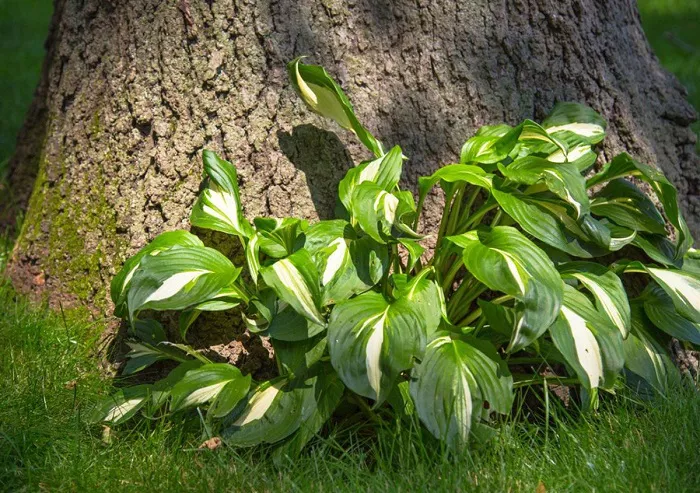In the cozy nook of our homes, houseplants thrive as silent companions, adding a touch of green to our living spaces. Soil, the silent hero, often goes unnoticed. Yet, for many houseplants, the acidity of the soil is a crucial factor that can make or break their health. Let’s delve into the world of acid-loving houseplants and discover how to nurture them to their full potential.
Understanding Acidic Soil
What Is Acidic Soil?
Acidic soil is characterized by a pH level below 7.0 on the pH scale. This scale ranges from 0 to 14, with 7 being neutral. Acidic soil is often rich in organic matter and can be found in areas with heavy rainfall, as rainwater tends to leach away alkaline minerals like calcium and magnesium. For houseplants, the right soil pH is essential for nutrient uptake and overall health.
Why Some Plants Prefer Acidic Soil
Certain plants have evolved to thrive in acidic conditions. The lower pH helps them access essential nutrients such as iron, manganese, and zinc, which are more available in acidic environments. These nutrients are vital for photosynthesis, growth, and overall plant health. Without the right pH, plants can suffer from nutrient deficiencies, leading to stunted growth and poor health.
Popular Acid-Loving Houseplants
Azaleas: The Showy Bloomers
Azaleas are beloved for their vibrant, funnel-shaped flowers that bloom in a riot of colors. These plants thrive in acidic soil with a pH between 4.5 and 6.0. Native to woodland areas, azaleas prefer well-draining soil and partial shade. To keep your azaleas happy, use a soil mix specifically designed for acid-loving plants and ensure consistent moisture without waterlogging.
Gardenias: Fragrance and Elegance
Gardenias are known for their intoxicating fragrance and creamy white flowers. They require a soil pH between 5.0 and 6.0 to flourish. These plants are sensitive to changes in pH and can develop yellow leaves if the soil is too alkaline. Gardenias also need high humidity, so misting the leaves regularly or placing a tray of water near the plant can help maintain the right environment.
Camellias: The Evergreen Beauties
Camellias are evergreen shrubs with stunning, rose-like flowers. They prefer a soil pH of 5.5 to 6.5. These plants are native to Asia and thrive in well-drained, acidic soil. Camellias need regular watering to keep the soil consistently moist but not waterlogged. They also benefit from a layer of mulch to retain moisture and regulate soil temperature.
Blueberries: Fruitful Delights
While not typically thought of as houseplants, blueberries can be grown indoors in the right conditions. These plants require a soil pH between 4.0 and 5.0. Blueberries are self-pollinating, so you can grow a single plant and still enjoy the sweet, nutritious berries. Ensure your blueberry plant receives plenty of sunlight and use a pot with drainage holes to prevent waterlogging.
Rhododendrons: Majestic and Hardy
Rhododendrons are hardy plants with large, showy flowers. They thrive in acidic soil with a pH between 4.5 and 6.0. These plants prefer partial shade and well-draining soil. Regular watering and a layer of organic mulch can help maintain soil acidity and moisture levels. Rhododendrons are perfect for adding a touch of elegance to any indoor garden.
Caring for Acid-Loving Houseplants
Soil Selection
Choosing the right soil is crucial for acid-loving plants. Look for a soil mix specifically designed for acid-loving plants, which typically contains peat moss, pine bark, and other organic materials. These mixes help maintain the right pH and provide good drainage. Avoid using regular potting soil, as it may not have the right pH balance.
Watering and Fertilizing
Consistent watering is essential for maintaining soil acidity. Use rainwater or distilled water, as tap water can be alkaline and affect the soil pH. Fertilize your acid-loving plants with a fertilizer designed for acid-loving plants. These fertilizers contain the right balance of nutrients and help maintain the soil’s acidity.
Monitoring Soil pH
Regularly test the soil pH using a soil pH meter or test kit. This will help you ensure that the soil remains in the right pH range. If the soil becomes too alkaline, you can add sulfur or aluminum sulfate to lower the pH. However, be cautious with these additives, as they can be harmful if overused.
Pest and Disease Management
Like all houseplants, acid-loving plants can be susceptible to pests and diseases. Keep an eye out for common pests like aphids, spider mites, and mealybugs. Regularly inspect your plants and treat any infestations promptly. Good air circulation and proper watering practices can help prevent many common diseases.
Creating the Perfect Environment
Light and Humidity
Most acid-loving houseplants prefer partial shade or filtered light. Place your plants near a window with sheer curtains to provide the right amount of light. Many of these plants also benefit from higher humidity levels. Misting the leaves regularly or using a humidifier can help create the right environment.
Repotting and Pruning
Repot your acid-loving plants every two to three years to refresh the soil and ensure they have enough space to grow. Use a pot with drainage holes to prevent waterlogging. Prune your plants as needed to remove dead or overgrown branches. This will help maintain their shape and promote healthy growth.
Conclusion
Caring for acid-loving houseplants can be a rewarding experience. By understanding their unique needs and providing the right environment, you can enjoy the beauty and fragrance of these plants in your home. Whether you choose azaleas, gardenias, or camellias, these plants will add a touch of natural elegance to your living space. So, roll up your sleeves and get ready to nurture your acid-loving plants to their full potential.


